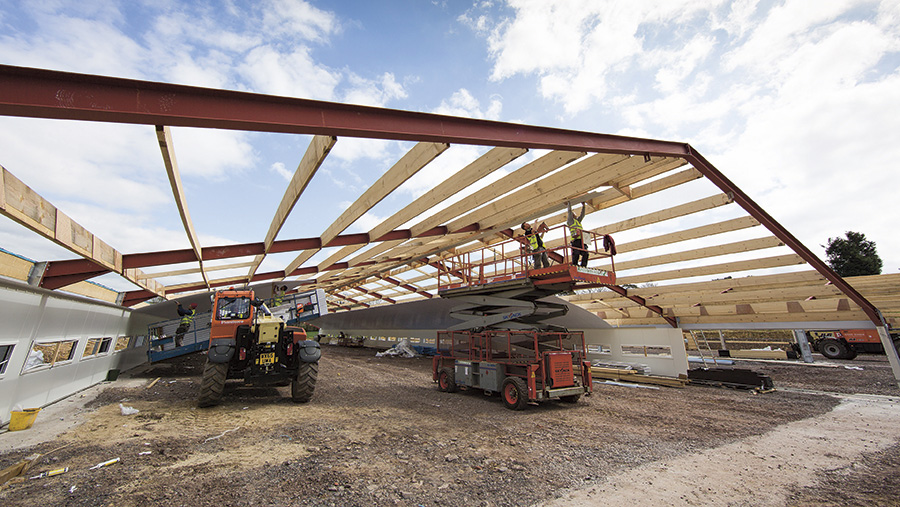Constructing poultry sheds: Your risks and liabilities explained
 © Geoff Pagotto
© Geoff Pagotto In the past three years there has been a huge increase in the number of poultry houses as a result of either expansion or diversification.
This growth is set to continue, and produces new exposures to risk – risk that farmers should protect themselves against, which means seeking appropriate advice.
Construction sites are subject to a host of rules and regulations that have severe penalties if breached. If you are considering expansion, take professional advice and ensure you have the correct cover in place.
See also: Report reveals profit fall for poultrymeat and egg producers
Andy Dutton, client director for the poultry sector at insurance broker David Roberts & Partners, offers some guidance.
Legislation
The primary piece of legislation is the Health & Safety at Work Act 1974.
But it’s also important to consider the Construction (Design and Management) Regulations (CDM 2015), which deal specifically with the planning, operation and safety of any given site.
CDM 2015 applies to all building and construction work and includes new build, demolition, refurbishment, extensions, conversions, repairs and maintenance.
These regulations place responsibility for safety and welfare of the site on the farmer or future owner.
Responsibility
The farmer must ensure that anyone appointed to carry out work is suitably skilled and experienced – and given sufficient time and resources to do the job.
This responsibility can be formally passed to a competent person, most likely the contractor, if there is only one company being used on a job, but it must be done in writing.
Where multiple contractors are involved, the farmer needs to appoint a principal designer and a principal contractor – otherwise they are assuming the role of both and the legal duties that they attract.
Damage liability
Another area of exposure is potential damage to the works in progress and whether or not this is the responsibility of the contractor carrying out the work.
The contract conditions need to define who is responsible for the works. However, check the contractor has the required level of cover. If numerous contractors are involved, this becomes an more complex matter.
Also remember, when the contractor has finished and has handed over their aspect of the job, responsibility for the works once again lies with the farmer.
All-risks cover
A fire or other damage – such as flood or malicious damage – will cause inevitable delays to the project.
One option is to consider taking out an owner-controlled contractor’s all-risks policy. This is quick and easy to arrange and can cover the works in progress, materials on site (both fixed and unfixed) and hired-in plant, and can also be extended to include loss of future profits caused by delays.
The policy covers the works from the moment the contract starts through to practical completion.
